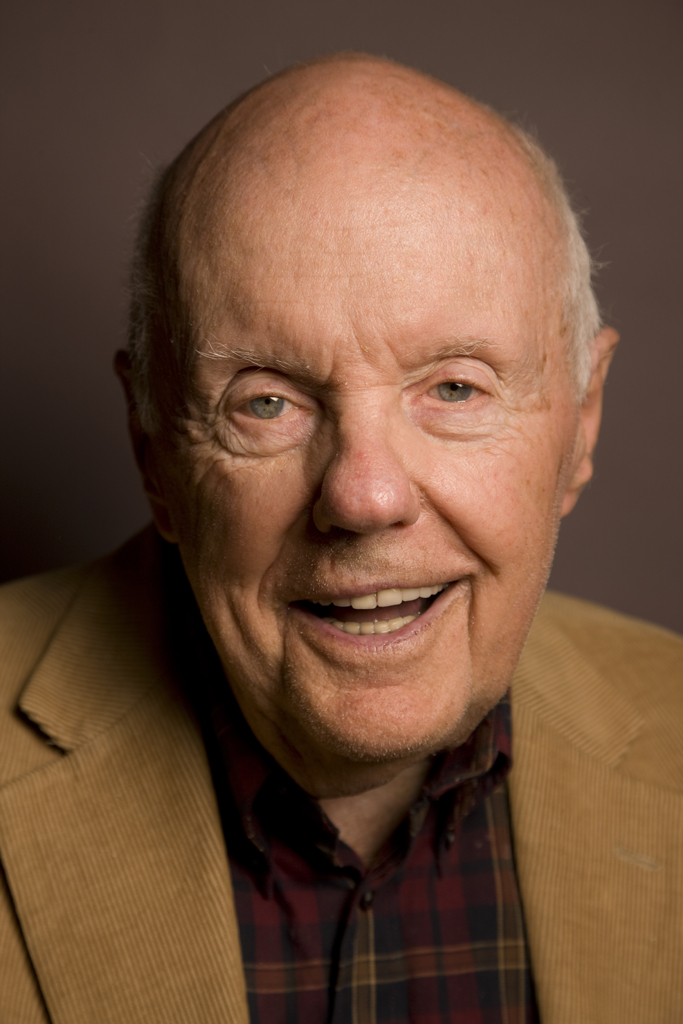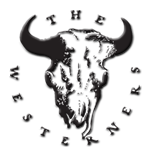Living Legend No. 53 John W. Robinson
John Wesley Robinson (1929-2018) was born in Long Beach, California. He attended the University of Southern California, and graduated in 1951. John did his military service in the U.S. Army during the Korean War, then after demobilization began to contemplate what to do with his life, and how he could make a living combining his his favorite subject, history, with his favorite pastime, hiking and mountain climbing. Much later, he went to grad school at California State University, Long Beach, where in 1966 he earned an M.A. Degree in History. John taught history for 35 years at the grade school and junior high school level, the final 32 years within the Newport-Mesa Unified School District of Orange County.
John W. Robinson was the Hiking Historian, a modern-day John Muir. He was equally at home trudging towards some mountaintop as he was in the research library. He climbed and took detailed notes on dozens of the tallest peaks in the North American West, and in Canada, Alaska, and Mexico. His love of the outdoors was nurtured as a child through family camping trips to Yosemite and YMCA summer camps in the San Gabriel Mountains during the 1930s. By the mid-1950s Robinson was leading Sierra Club hikes to and through California’s Sierra Nevada, as well as lower-elevation ranges closer to Los Angeles. He was a mainstay of the Southern California Sierra Club, and was repeatedly commended by that organization for his outstanding dedication to the protection and preservation of the Golden State’s natural wonders, especially through his unique talent of enhancing public awareness of them. In 1959 Robinson was given the Sierra Club’s Hundred Peaks Award in recognition of having climbed that many mountains in three different New World countries. Thirty-two years later, he was honored again by the Sierra Club’s Outings Service Award, for having introduced so many neophyte hikers and backpackers to the great outdoors.
John was the universally-acknowledged master of historical writing about the mountains, deserts, and all the lightly-populated wild places that still exist in Southern California. His publications were the antidote to the too-narrow, exclusively urban, writing of most academic historians who seldom venture beyond the Los Angeles city limits. Robinson understood the importance of topography and cartography to accurate historical writing better than any cellar-dwelling urban historian or Ivory Tower shut-in who remained innocent of in-person exposure to any of the places they wrote about. John also reveled in, as the old saying goes, “all of the -ologies.” In addition to his primary devotion to history, he was as knowledgable about the geology, climatology, botany, zoology, etymology, ethnology and archaeology of his beloved Southern California as were most experts in every one of these varied fields. Robinson considered familiarity with the “-ologies” as necessary for understanding history as most chairborne academics did political science, or economics.
John W. Robinson published a remarkable number of full-length books and articles on the history of out-of-the way places few Southern California city-dwellers were familiar with. He kicked off his writing career with Camping and Climbing in Baja California (1967), which was followed by Trails of the Angeles (1971). This handy hiking and back-packing guide has been in print for more than 50 years, and has sold more than 80,000 copies. It is one of the books, quite literally, on the shelf of every Boy Scout and Sierra Club member in Los Angeles County. Robinson indulged his own personal fascination with mining and prospecting history with Mines of the East Fork (1972), the first of what would be several books on the old mines of Southern California. This was followed, that same year, by yet another “trail” book, San Bernardino Mountain Trails (1972), and then by The Mount Wilson Story (1973), Mines of the San Gabriels (1973), and Mines of the San Bernardinos (1977). The books that John Robinson was most famous for, and for which he truly deserves a permanent spot atop literary Mount Olympus, are his beautifully-illustrated, large-format “mountain trilogy,” The San Gabriels (1977), The San Bernardinos (1989), and The San Jacintos (1993).
Even while writing one hiker’s guide or magnificent summary of the cultural and natural history of yet another Southern California mountain range after another, John contributed article after article to the Branding Iron, the Los Angeles Corral of Westerners International quarterly publication. He wrote about the old Ridge Route over the mountains from Los Angeles to the San Joaquin Valley, about the old Plank Road through the desert of Imperial County, and about what happened in and around Los Angeles during the Civil War, to name but a few of his many and varied Branding Iron articles. Robinson was also a mainstay of the California Territorial Quarterly, and its most prolific Southern California contributor. During the 25 years of this wonderful quarterly’s existence, John published an unsurpassed 44 articles on Southern California historical topics within its pages.
Not just the most prominent Sierra Clubber of Southern California, John Robinson was also a member of the Oregon-California Trails Association, and a founder of the California chapter of the Old Spanish Trail association. John won the Donald H. Pflueger Award from the Historical Society of Southern California, twice, in 1992 and in 1998, and the Scholastic Authorship Award of the Conference of California Historical Societies in 2003. He was made a Fellow of the Historical Society of Southern California in 2005 for “Exceptional lifetime achievements that have brought distinction to history.”
John W. Robinson was one of the most dedicated members of Westerners International you could ever hope to meet. He belonged to and was active within three different corrals, Los Angeles, Huntington, and San Dimas, and served as Sheriff of the Los Angeles Corral in 2001. Robinson won the Westerners International Coke Wood Award for his historical writing three times, in 1990, 1992, and 1995. In recognition of his prolific output as an historian, and his many and varied contributions to all three of the corrals he honored with his presence, John W. Robinson was made Westerners International Living Legend No. 53 in 2010.
It is hard to describe John W. Robinson without recourse to superlatives. Olympian is the adjective that comes most readily to mind, not only for his influential and inspirational publications, but also in its original, elevational, context. No Southern California historian exemplified the old saying “Without Geography, you are nowhere” better than he did. Place names held a special fascination for him, but whereas most of his urban-dwelling peers only studied the origins of the names of towns and cities, John delighted in revealing the sources of the names of creeks, mountain passes, overgrown alpine meadows, and abandoned wagon roads. He linked each place to the long-dead people, Indians and settlers alike, who named them, passed through or used them, or lived near them. And he was able to do this because he went to every last place he ever wrote about, no matter how isolated, nor difficult of pedestrian access.
John Robinson was a kind, gentle, and generous soul. Modest, humble, and immensely likable, he was always willing to share his knowledge with friends, students, fellow historians, even total strangers he met along the trail or in conference rooms. He was always willing to review and red-ink drafts given him by younger writers, and to encourage them in their efforts: the writer of this brief summary was one such admirer, and is still grateful for the time and thought he put into pre-publication reviews of his own research write-ups. Only the most productive writers know that every minute spent working on a draft written by someone else is a minute stolen from the work you should be doing on your own drafts, but John was never too busy to ignore the swarm of younger writers clamoring for his editorial suggestions and, of course, his approval. He could correct the most embarrassing error so avuncularly that you were left brimming with pride that he cared enough about your own work to help you get it right.
Late in life, John donated his extensive collection of books, maps, manuscripts, and drafts to the Los Angeles Corral’s archive in the Special Collections division of the University of Southern California Library. As he grew older, and the robust young body that had conquered so many tall mountains began to lose its battle against old age, he had to stop hiking, and then driving, but he never lost his wonderful sense of humor nor his upbeat outlook on life. John W. Robinson may now be gone, but his writing lives on. There is no doubt whatsoever that his wonderful literary legacy will continue to inspire and enchant hikers no less than historians in all of the places he wrote about. And there is also no doubt that future generations not yet born will, in years to come, still turn to John’s books, articles, and trail guides. These will continue to be the best pathway for escaping the claustrophobia that so plagues the overcrowded City of the Angels and its environs. Nor is there any doubt that once these future Angeleños have been guided by John W. Robinson’s writing to the wonderful wild lands that can provide solace for their minds, spirits, and bodies, they will thank him, as past generations have always done, for so generously sharing his wisdom.
By Brian Dervin Dillon, Ph.D., 2018, revised 2022.




